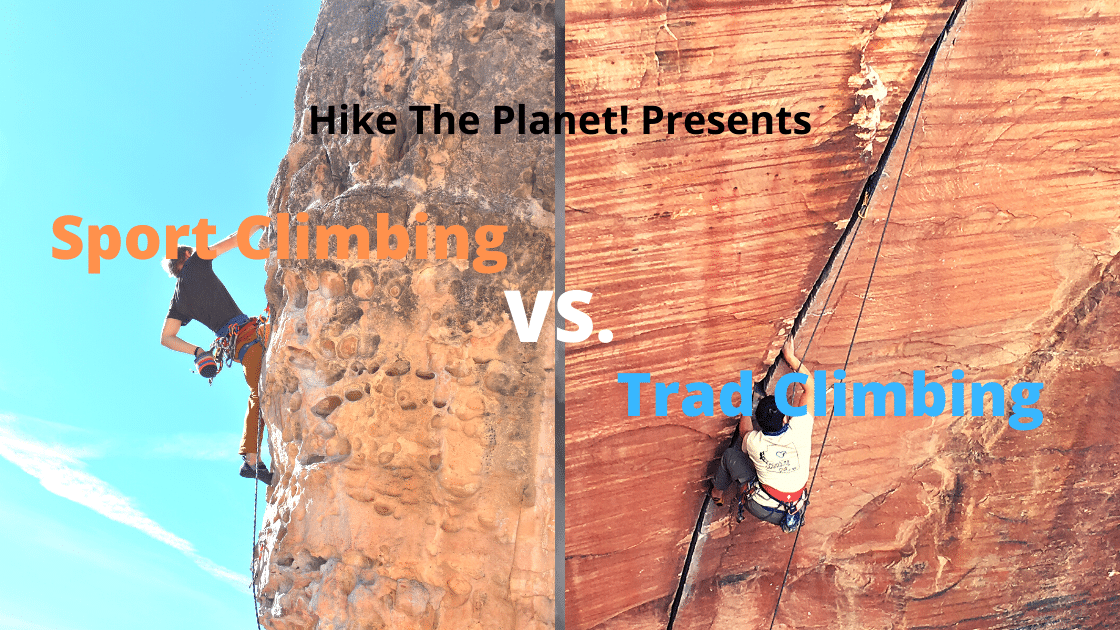Trad Climbing Vs. Sport
Table of Contents
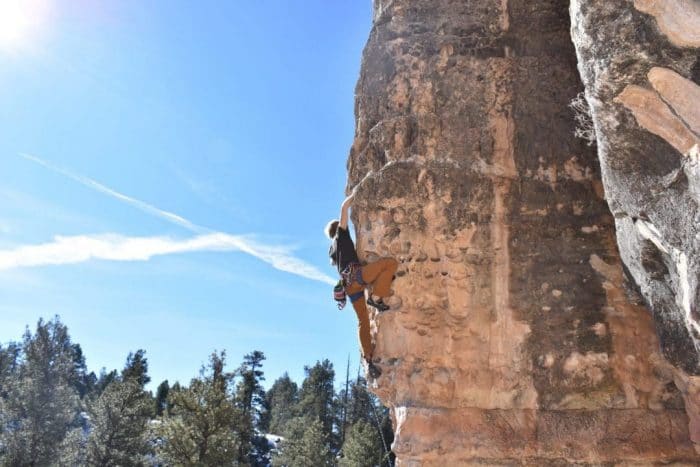
Sport Climbing, Trad Climbing, Aid, Bouldering? Isn’t it all just about getting yourself up a rock? That’s true- climbing is all about moving over vertical terrain. Yet that is where the similarities end.
Rock climbing is often categorized into several disciplines and sub genres-each varying with terrain, gear, techniques, rock types, and even ethics.
It may all seem confusing, but I’m here to help you distinguish between two major forms of free climbing-sport climbing, and trad climbing. This guide is intended for new rock climbers learning about the sport. I will walk you through the various types of gear, climbing styles, and the history of trad and sport climbing.
This article is geared to beginning rock climbers. If you are a gym climber making the transition to outdoor rock climbing, consider checking out our guide to going from the gym to the crag.
Similarities-Lead Climbing
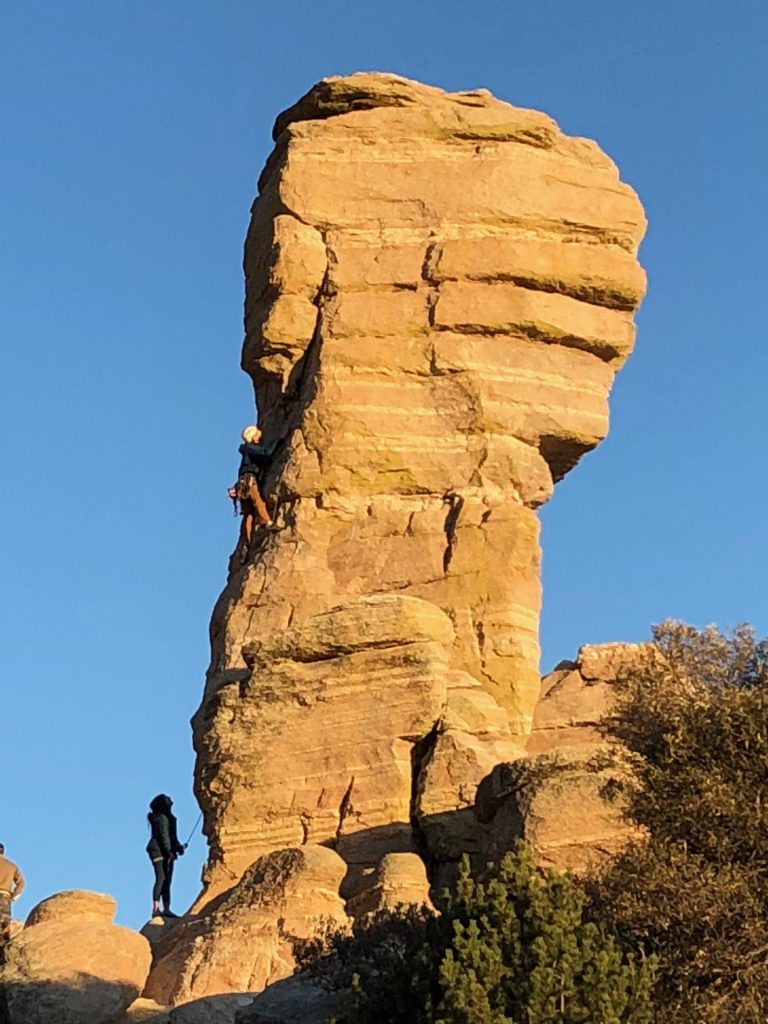
Before I get into the difference between trad and sport, let’s cover what they have in common. This is mostly to help avoid confusion:
- Both involve Lead Climbing-where a “leader” places protection as they climb, while risking a lead fall. Standard Lead Belay techniques are used in both sport and trad.
- Free Climbing-Sport and Trad are both forms of free climbing. Climbers only ascend by the use of their body, and do not use climbing gear to help them up the rock. Contrasted with Aid Climbing, where gear is placed in the rock, and is then grabbed, stepped in, or pulled on to gain vertical feet. Free Climbing is not to be confused with Free Soloing.
- Common climbing commands are used in each discipline, like “Take!”, “Slack!”, or “On Belay”.
That’s where most of the similarities end. To me, Sport Climbing is like watered down Trad. Less gear is required, but many of the same Lead Climbing and Free Climbing principles apply. In many ways, Sport is a good way to learn these techniques, and Trad expands on them.
Now, onto the differences between Trad and Sport Climbing.
History of Traditional Climbing
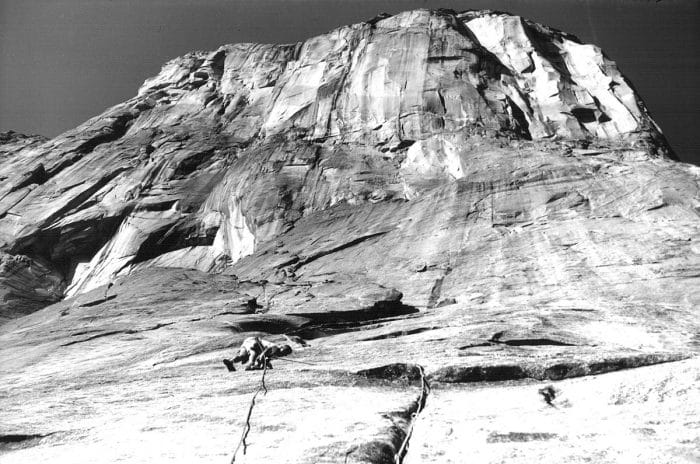
Traditional climbing is the oldest form of Free climbing, perhaps rivaling even bouldering in age. Back in those days, it was simply known as “climbing”. It wasn’t until youngsters started clipping bolts that a distinction was made. Young people are always trying to mess things up.
Long before bolts and chain anchors became a common sight at crags, climbers relied on gear, both natural and artificial to keep them safe. Much of early rock climbing resembled modern aid climbing, where mechanical gear was used to climb rock faces.
It wasn’t until the 20th century that free climbing-that is, climbing without using gear to help you ascend, came into vogue. Climbers began to see the athletic merit of free climbing. Early trad climbers used pitons, chocks, and hexes, in addition to the occasional slung tree or rock, to keep them safe.
Come 1978, and famed El Capitan climber Ray Jardine invents the Spring Loaded Camming Device (SLCD), or “Cam” for short. This new invention helped to push the sport even further, allowing climbers to deploy trad protection faster. After several iterations, the Cam has become the gold standard for rock climbing protection.
Trad Climbing Style-Cracks and Slab

To better identify trad climbing, look to the style. In general, most trad routes follow a distinct rock feature, such as a crack. These features create holds that can then be used to ascend the rock, and places in which to insert traditional protection.
As such, many trad climbers must use crack climbing technique. Proper crack climbing technique calls for wedging hands and feet into a crack in a way to support the climber’s weight. With the exception of a few bolted cracks, cracks are often de facto trad routes.
Cracks most often from in certain rock types, like granite, basalt, and sandstone. Most of the world’s best trad climbing areas, like Yosemite, fall under one of these rock types.
Besides crack, many trad routes require slab climbing. Slab routes are low angle rock, with few features to grab, step on, or protect. Instead, slab climbers must use careful balance, and friction features to ascend the rock.
Due to their featureless nature, many slab routes may use bolts for protection. Often, these bolts are used sparingly, like on Yosemite’s Snake Dike. A well rounded trad climber will be able to seamlessly switch between crack, and slab climbing, particularly if they are in a place like Tuolumne Meadows.
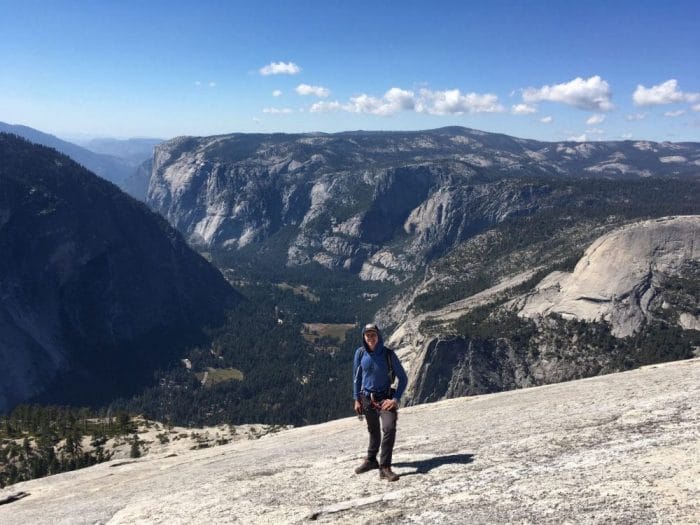
The best place to learn basic crack climbing is to get outdoors, and climb them. For a quick primer, check out our article on crack climbing technique.
Traditional Climbing Protection-The Coveted Rack
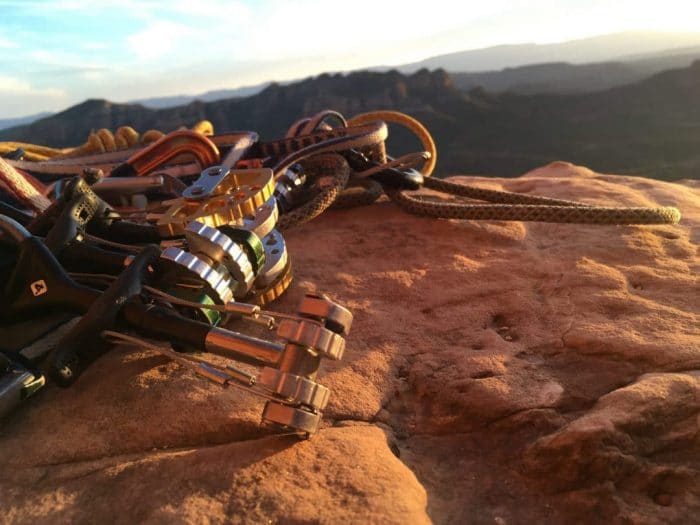
A Trad Climbing Rack combines several different types of climbing gear. To contrast Sport Climbing, a trad climber rarely clips a bolt for protection. Instead, removable protection is inserted into cracks and other features. If placed well, their gear will hold the climber in the event of a fall.
Climbing is an expensive hobby. Trad climbing is an expensive-er hobby. Climbing at Red Rocks when you struggle with gambling addiction may just be the expensive-ist hobby there is.
Trad gear is pricey. Your basic, fingers to hands sized single rack will run you a couple hundred bucks. As a climber progresses, they generally find that they need/want more trad gear. A double trad rack is common.
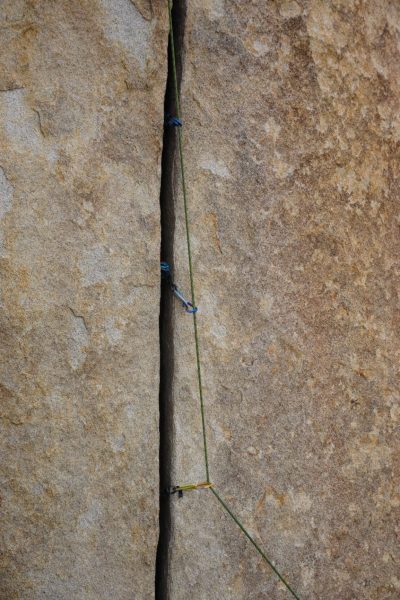
A Basic single sized Trad Rack typically consists of:
- One (1) set of finger to hand sized cams. Usually .5-3 sized Black Diamond C4s.
- One set of nuts.
- 3-4 Alpine Draws
Add in passive protection pieces, plus additional carabiners and slings, and the price of a trad rack soon rivals that of a well used Honda Civic.
Buying and amassing all of this gear can be a lengthy, drawn out process. Prospective trad climbers need to sort out preferred makes and designs of cams, and then they have to figure out how they’re gonna carry it all up a mountain.
If you’re looking to build a trad rack, take my advice. I put one together on a frugal, college student budget. Here’s some tips:
- Buy one or two pieces at a time.
- Start with a single rack, and work up from there.
- Keep an eye on sales
- Try to climb on your partner’s trad rack for a while.
For more tips on putting together a trad rack on a budget, check out our article on how to frugally build a trad rack.
Trad Harnesses-Padded for you Pleasure
Traditional climbing demands a certain set of features in a harness, Trad Harnesses fill the niche. Like shoes, they provide all day comfort, and diverse performance.
Your typical trad harness comes with extra padding, ideal for long days on multipitch routes. To fit a trad rack, these harnesses feature more, and larger gear loops. Some even come with rated haul loops, and Ice Clippers, allowing for even more versatility.
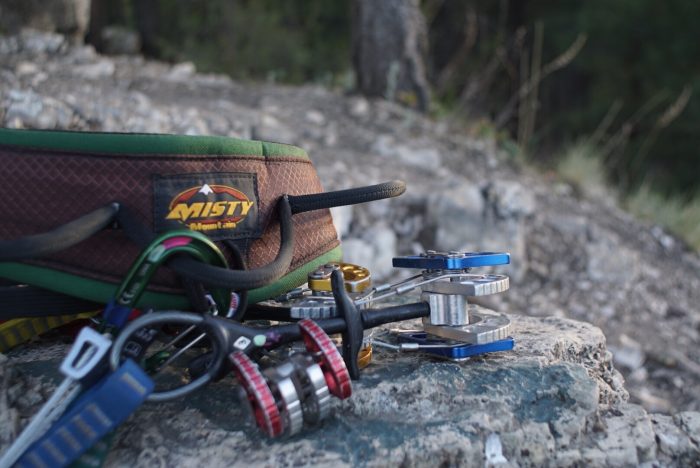
Companies like Misty Mountain have made a name for building quality trad and big wall harnesses. Most gear companies make harnesses that perform well in all disciplines, like the Petzl Adjama, or the Black Diamond Technician.
There has never been a day where I haven’t been thankful for the extra features on a trad harness. I love to have a fifth gear loop, particularly when I need to clip a water bottle or approach shoes to my harness.
Trad Shoes
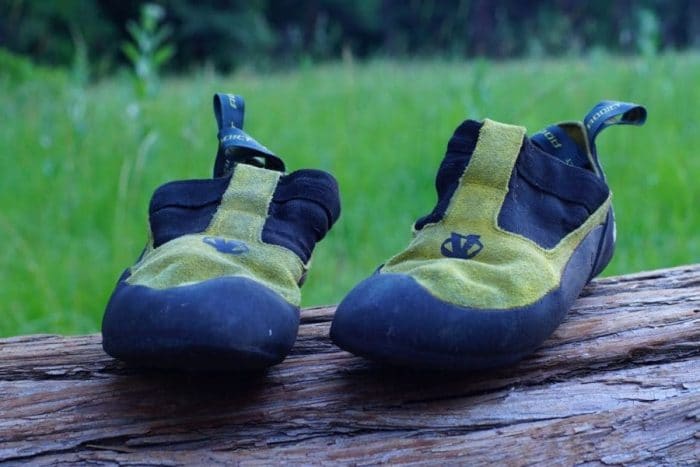
Trad Climbing shoes are the opposite of sport shoes-most have a flat, neutral shape, made for all day comfort. Downturned sport/bouldering shoes do not easily lend themselves to crack climbing, or comfort. For this reason, trad shoes are often designed with a slim toe box, padded soles, and use either slipper, or lace up design.
Related: Looking for the best crack climbing shoes? Check out our guide to our favorite crack climbing shoes.
It’s hard to go wrong when purchasing trad shoes. The major differences are usually found between brands. For example, 5.10 trad shoes fit wider feet, while La Sportiva makes shoes for narrow feet.
Trad shoes can usually be found in two varieties-slippers, and high tops. Trad slippers, like the 5.10 Moccasym, are almost purely designed for crack climbing. High Top trad shoes, such as the La Sportiva TC Pros are all around performers, made to do everything from slab climbing, to big wall, to toe jamming.
History of Sport Climbing
Sport climbing is Trad’s younger, better looking sibling. First appearing on the scene in the 80’s, sport climbing has become one of the most popular forms of rock climbing.
Sport climbing was born out of a devotion to pure athleticism. Many climbers, looking to push the limits of the sport, began to drill protection bolts into rock faces.

Now, climbers could just clip their rope to a bolt, and keep climbing. No longer did climbers have to worry about the quality of the rock or the strength of their protection. Sturdy bolts, placed at regular intervals, made climbing much safer.
Sport Climbing allows for agile, skillful climbing on otherwise blank faces. Sturdy bolts could catch falls better than any cam or nut, allowing sport climbers to push the envelope.
The distinction between the two pursuits is in the name. Sport climbing focuses on athleticism, while trad climbing is about adventure and exploration.
Some of the earliest sport crags include Oregon’s Smith Rock State Park, and Colorado’s Shelf Road. Nowadays, world class sport crags in places like Spain and Thailand attract sport climbers from all over. Sport climbing has grown to be one of the most popular climbing styles.
Sport Climbing Style-Face Climbing and Overhangs

Common outdoor sport climbing routes do not always follow a specific rock feature. Instead, these routes follow a series of usable hand and foot holds.
More so than trad climbing, sport climbing style demands raw power, strength and flexibility. Climbers must contort and balance themselves on tiny holds, and find good stances to from which to clip bolts.
Many sport climbs ascend overhanging rock. Some of the hardest sport climbs in the world travel the length of a cave roof. These sport routes require incredible finger strength, and gymnastic ability.
Because bolts can protect on nearly any rock type, there is far more style variability in sport climbing, than there is in trad climbing. Common sport climbing rock types are Limestone, Sandstone, and Conglomerate.
Interestingly, trad climbing and sport climbing styles begin to mesh as the grades increase. For example, ultra difficult crack climbs, like Beth Rodden’s Meltdown begin to resemble face climbing more than crack climbing.
I will also mention that sport climbing lends itself easily to Indoor Lead Climbing. Climbing gyms commonly have indoor lead climbing walls, where climbers can clip into pre-hung sport quickdraws. An indoor climbing gym is a good environment to initially learn these skills.
Sport Climbing Protection-Quickdraws, Gri-Gris, and Belay Glasses
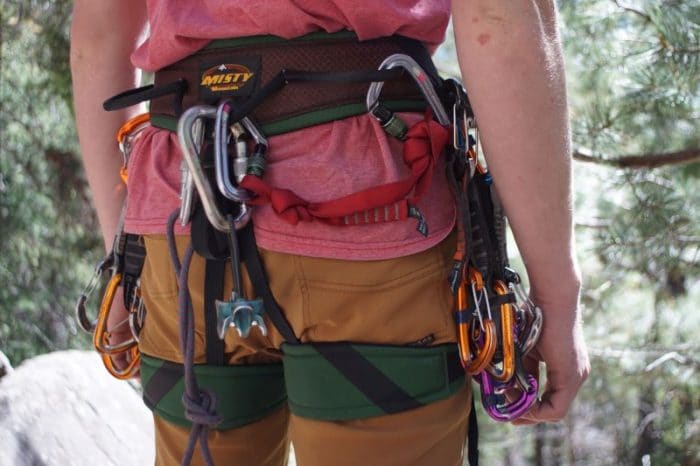
Sport climbing protection is two parts: the bolt, and the quickdraw. Expansion bolts are drilled into the rock, and a trusty quickdraw is there to clip it. Sport climbing is simple, and it doesn’t take a lot of mental effort to master the basics. You clip, and then you climb-that’s it.
A quickdraw is the most crucial part of a sport climber’s tool box. It’s basic purpose is to secure the lead climber’s rope to the rock face, and to be able to catch a leader in the event of a fall. To accomplish this, the quickdraw comes in two parts-a strip of nylon, known as a “dogbone”, and two carabiners at either end. One carabiner clips the bolt, and the other clips the rope.
Sport racks seem awfully plain. Compared to a trad rack made of colorful bits and bobs, the sport rack is uniform, and simple. Most climbers will rack 6-12 quickdraws, and a few lockers and slings. It’s a bunch of carabiners hanging from a harness, and there is little room for variation of the basic design.
You can’t mess up a quickdraw. Any will do. Some are lighter, and some have varying length dogbones, but they all do the same thing. Everything else is just marketing.
Perhaps the best part about a sport rack is that it’s much cheaper to purchase than a trad rack. A savvy shopper will be able find a basic sport climbing rack for a $100, give or take. Not including shoes and harness, sport climbing is a much more accessible style of climbing.
Sport Climbing Harnesses-Slim and Speedy
To match the athletic qualities of sport climbing, climbers can find purpose built harnesses. Sport harnesses use a slim, lightweight design to allow freedom of movement on the rock. They typically have fewer gear loops, and there is less padding.
Sport climbing harnesses are meant for quick, energetic burns on a short sport route. As such, they don’t need many bells and whistles. Like a sport rack, the harnesses are often a bit more affordable than trad harnesses.
As I climb both disciplines, I like to use a good all arounder, like the Petzl Adjama. Most harnesses sold today will perform well all around, regardless of design-it comes down to a matter or comfort, and weight.
Sport Climbing Shoes
Anyone in the market for Sport Climbing shoes will be in luck, because there’s a ton of shoe options out there. You can find any shoe to fit your climbing style, foot shape, and even rock type.
In general, sport climbing shoes will feature a downturned, more aggressive shape. With a bulky toe box, and tight fit, these shoes are designed to curl the toes downward, allowing more force to be pushed into small footholds. This effect results in better footwork on vertical and overhanging terrain.
Sport shoes are not ideal for most trad routes. Generally, the bulky toe box makes foot jamming more difficult, and you won’t want to be wearing tight shoes on all-day multipitch routes.
Sport shoes come in many different varieties. Try a few on before you buy, and as always, find the most comfortable pair. Some sport shoes do well for specific rock types, and others are good jack-of-all-trade shoes.
Conclusion
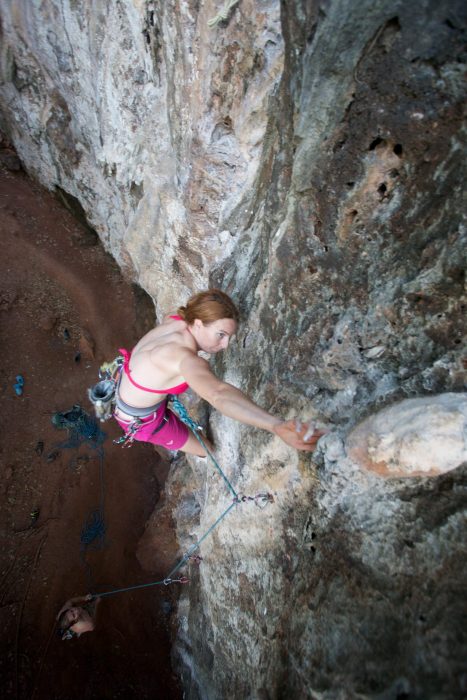
- Trad and Sport are forms of both Free Climbing and Lead Climbing
- Trad Climbing is an older style of climbing, focusing on adventure. Sport climbing is designed to push the athletic envelope of the sport.
- Traditional Routes follow Cracks and Slabs. Sport climbs ascend Roofs and Vertical walls.
- Trad uses removable protection like cams, nuts, and hexes. Sport climbing protects with Quickdraws and Bolts.
- Trad gear are designed for comfort and technique. Sport harnesses and shoes are for style and speed.
I hope that you have found this article helpful! If you have any questions, comments, or corrections, feel free to add it in the comments section.
- The Best Campsites Around Big Bear California - February 26, 2021
- Hiking to the Hollywood Sign Via the Brush Canyon Trail - July 13, 2020
- Dirt Cheap Hiking and Backpacking Gear: The Most Affordable Gear on the Internet - July 4, 2020
